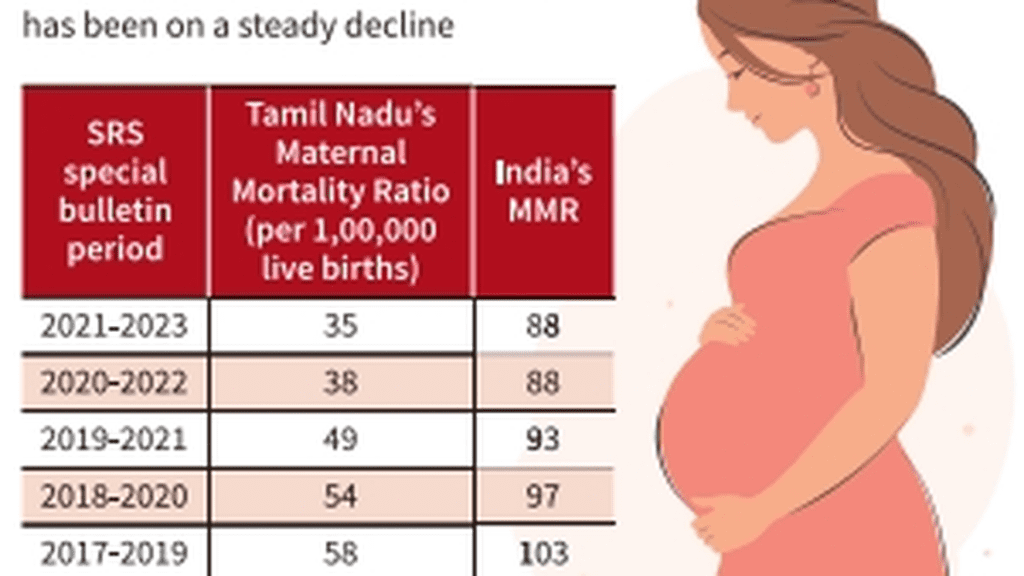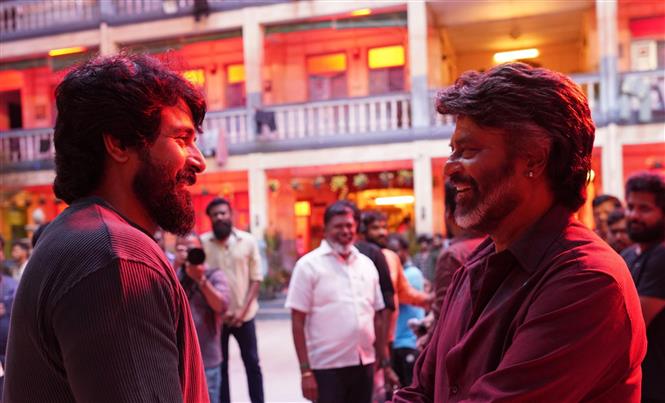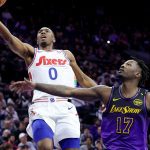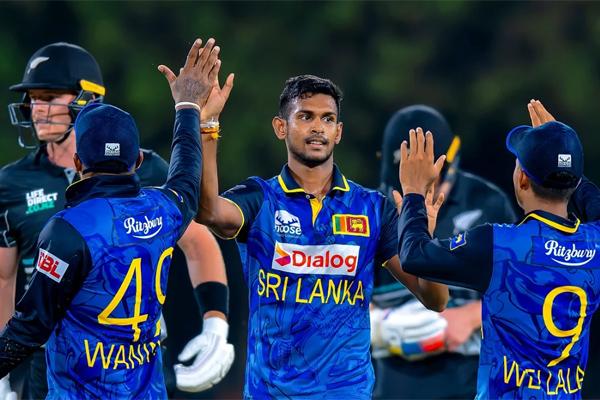Australian Open 2025 Review: Zverev no match for Sinner, Keys dethrones Sabalenka
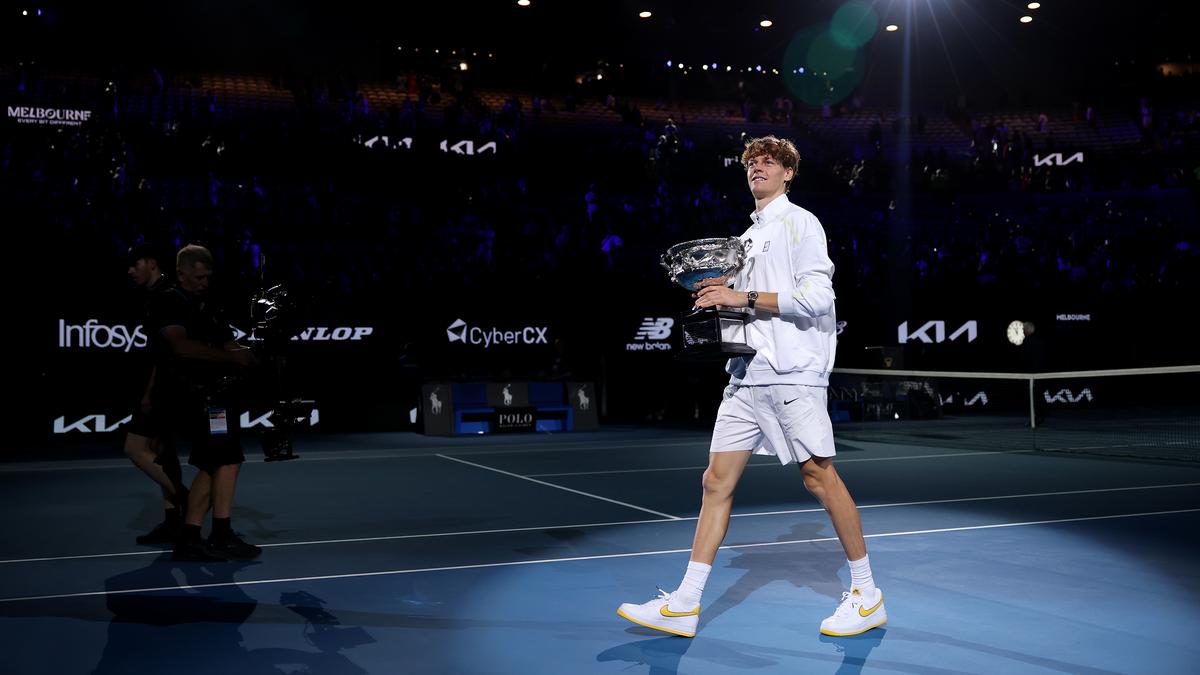
Australian Open 2025 Review: Zverev no match for Sinner, Keys dethrones Sabalenka
On the court, Jannik Sinner is both the proverbial irresistible force and the immovable object. The 23-year-old Italian possesses the nerves and precision of a diamond cutter and the killer instinct of a hired assassin. Sinner boasts perfect technique and smart tactics that he implements brilliantly. His power is devastating, yet he knows when and how to temper it with finesse.
Off the court, Sinner is the epitome of diplomacy and empathy. He defuses controversy, praises everyone from tournament staff to tennis greats, and exudes confidence and humility with refreshing authenticity.
This sui generis athlete fittingly displayed all his skill and character before a record-setting attendance of more than 1.2 million spectators during his clinical 6-3, 7-6(4), 6-3 final triumph on the 120th birthday of the Australian Open.
Sinner broke (or equalled) several records himself, such as joining Roger Federer, Novak Djokovic (twice), Ivan Lendl, and John McEnroe in winning three consecutive Grand Slam titles on hard courts. He became the eighth man in the Open Era, which began in 1968, to win his first three or more Major title matches (following Jimmy Connors, Bjorn Borg, Stefan Edberg, Gustavo Kuerten, Federer, Stan Wawrinka, and Carlos Alcaraz). A paragon of high-level consistency, Sinner also faced no break points in the final of a Major, a feat achieved only by Federer at the 2003 Wimbledon and Rafael Nadal at the 2017 US Open.
Alexander (Sascha) Zverev enjoyed a deceptive 4-2 match edge over Sinner in their rivalry going into the 2025 AO final. Sinner began emerging as a superstar at the 2023 Davis Cup final, where he whipped Djokovic. Soon after, the Italian won his first Major at the Australian Open. In August 2024, the much-improved Sinner, then No. 1, beat Zverev in a close three-setter on the Cincinnati hard courts. When they met in this Melbourne final, Zverev’s No. 2 ranking was misleading because the Paris Olympics — where Djokovic outplayed Alcaraz for the gold medal — unjustifiably awarded no ranking points.
The most pertinent statistic was Zverev’s horrendous 1-12 career record against top-5 opponents at Grand Slam events. Tellingly, the 6’6” German caved in his two previous chances to win a Major. He blew a two-set advantage against Dominic Thiem in the 2020 US Open final and suffered the same bitter fate against Alcaraz in the 2024 Roland Garros final. Conversely, Sinner racked up 47 wins in his first 50 matches as world No. 1, equalling the record set by Borg and Connors.
Any hope Zverev had of capturing his first Major after years of frustration faded early in Sinner’s decisive victory. Relaxed and confident, Sinner opened the final with an ace and easily held serve (at love), as he would throughout the match.
Zverev staved off two break points in the fifth game, but two games later, Sinner converted his sixth break point when Zverev erred on a backhand volley. “Despite awesome serving, Zverev still lost this game,” noted ESPN analyst McEnroe. Not even getting 83 per cent of his rocket first serves in saved him from losing the first set, 6-3.
The 15,000 spectators in Rod Laver Arena cheered Zverev on to get back into the match, even though he looked resigned much of the time. When Sinner erred on a drop shot to make the score 5-6, 30-all in the second set, the crowd roared. But Sinner won the next two points to quash the threat and force a tiebreaker.
Serving at 4-all, Zverev suffered the unkindest cut of all when Sinner’s forehand clipped the top of the net and barely plopped over for a fluke net cord winner. On the next point, Zverev missed a backhand serve return and swiped his racket on the court in frustration. Sinner wrapped up the 7-4 tiebreaker with his trademark 1-2 punch — a wide serve followed by a forehand winner into the open court. Zverev smashed his racket during the changeover.
Zverev, like the fans, sensed there would be no miracle comeback for him, as there had been a year ago for Sinner against Daniil Medvedev. Sinner is a far better player now in every way. He has become a harder-hitting version of Djokovic, albeit slightly less athletic.
As Mark Petchey, the Tennis Channel analyst, said: “You feel like you hit an offensive shot to Sinner’s backhand corner, and it comes back with interest on it.” His mastery of the extreme open-stance two-hander — almost doing the splits while maintaining perfect balance — looks exactly like that of the hyper-flexible Djokovic.
Zverev failed to ignite the crowd with any positive body language, which, in turn, would have raised his energy level. An occasional chant of “Let’s go, Sascha!” wasn’t enough to lift his spirits or game in the third set. Sinner got the only service break he needed for 4-2. On championship point, Sinner showcased his versatility with a forehand drop shot followed by a backhand passing winner.
A final pitting Sinner against either Alcaraz, who captured the French Open and Wimbledon last year, or Djokovic would have been more entertaining and likely much closer. Unfortunately, seedings based solely on the flawed ATP rankings caused No. 7 Djokovic to face No. 3 Alcaraz prematurely in the quarterfinals. Djokovic prevailed 4-6, 6-4, 6-3, 6-4, but it was a Pyrrhic victory as he tore his left hamstring muscle.
For the first time in their eight matches, the crowd pulled for the ageing (fading?) champion. Chants of “Nole! Nole!” reverberated around the stadium well past midnight. The exasperated Alcaraz did himself no favours when he mimicked the injured Djokovic with fake hobbling.
“Pretty much a normal Djokovic match, drama incorporated,” said ESPN analyst Patrick McEnroe. “It felt like it was the final of a Slam. I wish it was,” said Tennis Channel’s Lindsay Davenport.
The sterling performance evoked memories of Djokovic’s greatest career matches, prompting all-time great Martina Navratilova to comment, “Novak had great depth and precision. It’s like he had the ball on a string. I’ve never seen Alcaraz that frustrated before.”
Djokovic, who had easily ousted young Czechs 24th-seeded Jiri Lehecka and 26th-seeded Tomas Machac before eliminating Alcaraz, certainly still had the game to do the same against Zverev if he weren’t injured.
But his left thigh was wrapped in tape covered by white strapping, and he hadn’t practised except for a few minutes before the intriguing semifinal. With Djokovic leading Zverev 4-3 in the first set, a concerned Patrick said, “He looks 75 per cent of his maximum.”
Would that be anywhere near enough against Zverev? The plot thickened when Djokovic didn’t run for Zverev’s forehand winner that evened the score at 6-all. Was the canny 37-year-old saving energy for the tiebreaker or was he in too much pain to run?
At 3-4 in the tiebreaker, Djokovic smacked a 197 kph ace. Then came a beautiful backhand drop shot followed by a diabolical topspin lob winner over the towering Zverev for 5-4. A jubilant Djokovic fan raised a sign saying, “Keep calm and the GOAT is back.”
Not so fast. Djokovic’s backhand slice floated out for 5-5, and Zverev’s bold forehand winner put him ahead 6-5. Djokovic dictated the next point and moved forward but surprisingly missed a routine forehand volley, conceding the tiebreaker 7-5.
Djokovic then stunned the crowd and Zverev when he immediately walked to the umpire and retired. “Game, set, and match, Zverev” — came the announcement. A small number of fans unfairly booed.
Zverev came to his defence in his on-court interview with Jim Courier: “Don’t boo a player when he goes out with an injury. There’s no guy I respect more than Novak… He’s won this tournament 10 times… I played him in 2021 when he had an abdominal tear, and he served 28 aces.”
At his press conference, Djokovic elaborated: “I did everything I could to manage the muscle tear. Unfortunate ending, but I tried. It was getting worse and worse. I kept feeling more and more pain… Injury is the biggest enemy of a professional athlete.”
In the other semifinal, Sinner faced 21st seed Ben Shelton, the high-energy American with a high-octane lefty serve. Sinner had held serve 96 per cent of the time in five prior matches. So, Shelton raised hopes for a huge upset when he broke serve in the opening game and 11th game to serve for the set at 6-5. Somewhat rattled, Sinner had to fend off two set points, forcing a tiebreaker.
Reckless forehand errors undid the American and Sinner seized the tiebreaker 7-2 and never looked back in his predictable 7-6(2), 6-2, 6-2 victory. Shelton, coached by his father Bryan, a 1990s touring pro, is clearly a work in progress. His backhand is a glaring weakness, his forehand is erratic, and his shot selection is often low percentage. “To make the top 10, Shelton has to improve his return of serve,” said former No. 1 Courier.
As for the superiority of Sinner, however, there is no doubt at all. You can take it first-hand from Zverev. “He’s very, very similar to Novak when he was at his best,” Zverev said. “They barely miss. They make you think you have to overhit all the time to have a chance in a rally against them. It’s very, very difficult to win a point from the back of the court against them.”
When four-year-old Madison Keys first saw Venus Williams on TV, she was smitten with her dress. Her sports-loving parents told her she would have to play tennis to wear it. From then on, the talented American dreamed of emulating superstar sisters Venus and Serena.
In 2009, Keys became the seventh-youngest player to win a WTA main draw match at 14 years and 48 days, and the youngest since prodigy Martina Hingis in 1994. Soon after, she beat Serena in a World TeamTennis set, prompting Serena to describe her as “a future No. 1.” In 2016, Keys became the first American to debut in the Top 10 since Serena had done so in 1999.
Ever closer to fulfilling her girlhood dream, she faced close friend Sloane Stephens in the biggest match of their lives for the coveted title at the 2017 US Open. The pressure paralysed Keys. Making 17 errors in the first seven games, she self-destructed in a 6-3, 6-0 tearful debacle.
Fast forward to this Australian Open. “I’ve obviously thought of that match endlessly for the past eight years,” said Keys with a bittersweet laugh, after upsetting world No. 2 Iga Switek in a riveting 5-7, 6-1, 7-6(8) semifinal. Keys said she learned important lessons from that traumatic loss and a 0-6, 7-6(1), 7-6(5) heartbreaker to Aryna Sabalenka after leading 6-0, 5-3 in the 2023 US Open semis. “I’m probably going to be uncomfortable 99 per cent of the time that I’m on the court, and that’s OK, and I can still also play tennis through that.”
Some critics predicted Keys would never fully control her explosive but erratic game or her often-fragile nerves. Others, like Chris Evert and Davenport, believed it was just a matter of when, not if, she’d win a Grand Slam title. Keys trained at all-time great Evert’s tennis academy in Florida from 2005 to 2011, and former No. 1 Davenport coached her in 2015 and 2017.
Bjorn Fratangelo dated Keys for seven years and became her husband last November. A former junior star who beat Dominic Thiem in the 2011 French Open boys’ final and later ranked No. 99 on the ATP Tour, Fratangelo advised Keys for several years before becoming her official coach 18 months ago. He put the critical final touches on her technique, tactics, and equipment.
“What I’ve tried to instil in her is that winning and losing is irrelevant, but how you lose and how you win matters,” Fratangelo told The Athletic. “‘Don’t lose being passive, because it’s not who you are. Let a counterpuncher lose being passive because that’s what they do. You lose putting your foot on the gas pedal and that’s OK. It’s going to happen.’”
Under his guidance, Maddie — as her friends affectionately call her — changed her serve from a platform stance to a step-up one. That enabled Keys to land farther inside the baseline, putting her in a better position to attack with her booming forehand. Concomitantly, she lowered her service toss to keep her swing continuous, which increased her consistency. Keys switched from a Wilson racket to a lighter Yonex, which she can manoeuvre better, and to harness her power with added topspin, she changed her strings from half polyester and half gut to all poly.
Ironically, Keys found inspiration from Sabalenka. The world No. 1 enjoyed a 4-1 dominance in their rivalry, beating her all three times on hard courts and both times at Slam events. “The one thing I really wanted to try to be better at was not playing more passively in big points and just trying to emulate the way she trusts her game and the way she goes after it,” she told Eurosport. “If you’re able to do that and you miss and you lose, it’s on your terms. I think her ability to always go for it, no matter what the score, is really impressive. She plays such fearless tennis. She has the ability to play so well that way. I think it’s unique.”
And for seven straight matches at a Major, Keys proved she could perform like that too. Even more impressive, the 22-1 pre-tournament longshot beat four top-10 opponents to equal an Open Era record. Only one victory came easy, though. In the opening rounds, Keys edged fellow American Ann Li 6-4, 7-5, and outlasted Romanian qualifier Elena-Gabriela Ruse 7-6(1), 2-6, 7-5.
Next came the No. 10 seed, Danielle Collins, who had been friends and pen pals with Keys since they were 10. Collins, the 2022 finalist at Melbourne, became annoyed by hecklers during her 7-6(4), 4-6, 6-2 win over hometown favourite Destanee Aiava. Afterward, she sarcastically blew several kisses to them, one before touching her derriere — “Kiss my *ss!” in American parlance.
When Collins entered the court to play Keys, the fans booed the fiery American, and yet again when the trainer arrived mid-match to check her knee. Djokovic, who has often battled hecklers during his controversial career, supported Collins. “I loved her response. I loved it. Everything she said on the court, off the court…. I know exactly the feeling. So, I think she was funny, smart.”
To the delight of the crowd, the popular Keys thumped Collins 6-4, 6-4. Afterward, Tennis Channel analyst Prakash Amritraj said, “I don’t care who you are. That has to be tough to deal with.”
In the fourth round, Keys encountered the placid but heavy-hitting sixth seed, Elena Rybakina, the 2022 Wimbledon champion and 2023 Australian Open runner-up to Sabalenka. The 6’ Kazakh, under new coach Goran Ivanisevic, looked uninspired and slow as Keys prevailed 6-3, 1-6, 6-3.
Keys volleyed superbly, winning 23 of 26 net points to overcome 28th seed Elina Svitolina in a 3-6, 6-3, 6-4 quarterfinal test. Her improved serve technique paid off as her first serve average rose this season to 109 mph, six mph more than in 2024, despite mixing in plenty of kick serves. Earlier, Svitolina matched her husband Gael Monfils, who upset No. 4 Taylor Fritz, by taking out No. 4 Jasmine Paolini 2-6, 6-4, 6-0.
Meanwhile, No. 2 Swiatek sailed through the weakest quarter of the draw, giving up just 14 games in five matches. Only Maria Sharapova (9), Monica Seles (12), and Steffi Graf (13) have allowed fewer games before the AO semis. Swiatek’s most impressive win, though the 6-1, 6-2 score didn’t reflect it, came against tough-as-nails American and No. 8 seed Emma Navarro.
The 23-year-old had battled through three-set wins over Peyton Stearns, Wang Xiyu, three-time Major finalist Ons Jabeur, and crafty No. 9 seed Daria Kasatkina. Following her victory over Jabeur, she had the best quip of the tournament: “I love three sets. I love tennis so much. I can’t resist playing three sets.”
In what ESPN analyst Mary Joe Fernandez called “the match of the tournament,” Keys staved off a match point — down 6-5 in the deciding set — against Swiatek, and belted a forehand serve return that forced a backhand error from the Pole. Keys was so intently focused that she later said she didn’t remember it — though Swiatek surely will. Two points later, the five-time Major champion blinked, double-faulting to set up a dramatic, 10-point match tiebreak.
Once again, Keys lived dangerously. She trailed by one or two points up to 8-7 for her opponent. Then she grabbed the last three points with an ace, unreturnable serve, and, ironically, an unforced error from Swiatek’s forehand, her best shot, to seal a thrilling win. Relieved and happy, Keys bent down on her knees and cried.
“She pushed me when she needed to,” said the dejected Swiatek, who has lost most often on hard courts to power hitters like Keys. She conceded Keys “was brave with her decisions” and “totally deserved to be in the final.”
Sabalenka, going for a three-peat at the Australian Open and her fourth Major title, rampaged through the top half of the draw, except for a 6-2, 2-6, 6-3 quarterfinal win over solid-stroking Russian veteran and No. 27 seed Anastasia Pavlyuchenkova.
The eagerly anticipated contest between Sabalenka and No. 3 Coco Gauff never materialised. What happened? Gauff had entered the AO unbeaten at 9-0 this year and 22-2 since the end of the 2024 US Open. Almost inexplicably, her forehand and serve fell apart to the tune of 41 unforced errors and a disappointing 7-5, 6-4 defeat. Paula Badosa, who was ranked No. 2 in April 2022, has all the shots but, like Keys, sometimes got nervous on big points and occasions. Not this time. She blasted two aces in the last game to clinch the biggest win of her career.
In the semis, the Belarusian basher faced 11th seed Badosa. Best of friends, they often practise together, shop together, and make dancing videos together.
Sabalenka played as fiercely as the tiger tattooed on her forearm and stamped on her sneakers, devouring Badosa 6-4, 6-2, thanks to 32 winners, and just one double fault — her bugaboo until two years ago. After Sabalenka won the Brisbane tune-up event, Badosa told ausopen.com: “For me, what she improved the most is how she deals with emotions. She’s a very emotional girl. That’s why I empathise a lot with her. That’s the big change she made in her game, also believing she can be the best, and she proved it.”
Indeed, she had. Even though the Queen of Hard Courts was a solid betting favourite for the final, some observers, like Jessica Pegula, picked her compatriot. Fernandez recalled that after Keys beat Pegula in the Adelaide final two weeks earlier, Pegula said, “If she plays half as well as she played against me, she’ll win the tournament.”
Having Fratangelo in her corner under the liberalised coaching rule — which, in my view, contravenes the traditional and valid tenet of self-reliance — unquestionably tilted the balance toward Keys. When asked what the hardest part of his coaching was, she said, “I have to admit he’s right all the time.”
When Keys won the toss, she smartly chose to receive. In the opening game, Sabalenka nervously double-faulted twice, Keys cracked two forehand winners, and quickly broke serve. Seconds after she was broken but still led 5-3, Keys got some quick advice from Fratangelo and broke Sabalenka, climaxing the 6-3 set with a backhand winner. The Belarusian roared back to take the second set 6-2.
The shot of the match came with Keys serving at 2-2, love-15. With a graceful leap reminiscent of Federer, she conjured a dazzling backhand volley angle that landed on the sideline and set up an easy forehand put-away. Had she erred, Keys would have trailed love-30.
Both players held their serve and nerve up to 6-5, when Keys unleashed a forehand winner. Now the ball was in Sabalenka’s court to try to hold serve for 6-all. In the last game, she faltered, getting only one first serve in, while Keys pounded a backhand winner for love-30 and closed out the 6-3, 2-6, 7-5 upset with another forehand winner.
Keys cried tears of joy. Distraught, Sabalenka threw her racket on the court, covered her head with a towel, and wept.
During the trophy presentations, the zany Sabalenka looked at her team and joked, “As always, that’s your fault, guys. I really hate you.” The crowd laughed. Praising her conqueror, she said, “You crushed this tonight, really well deserved.”
Keys returned the compliment. “You’re always so tough to beat.”
Crediting her own team for her first Grand Slam crown in her 46th Major appearance, Keys said, “They believed in me when I didn’t believe in myself.”
The men’s event was rife with controversies. Matches ending well past midnight are bad for players, spectators, tournament staff, and the media. Learner Tien, a clever American teenager, outwitted fifth-seeded Medvedev 6-3, 7-6(4), 6-7(8), 1-6, 7-6(7) in a five-set marathon that finished after 2 am. He then ate pizza at 4 am and didn’t get to bed until 7 am.
In the unfathomable and unprofessional absence of electronic service let machines, umpires called lets, infuriating players who insisted there weren’t lets — and vice versa. To make matters worse, Navratilova amplified her foolish crusade to abolish the time-tested service let rule. Petchey, a voice of reason, rightly responded, “Why bring luck into a game of skill?”
Electronic line calling should also include replays to determine double bounces. In her victory over Navarro, Swiatek said, “I wasn’t sure if it was a double bounce, or I hit it with my frame. It was hard to say because, like, I was full sprinting. I don’t remember even seeing the contact point.” Fair enough, but replays showed the ball had bounced twice. Veteran umpire Eva Asderaki shouldn’t have allowed Swiatek to win the point.
In-match coaching expanded as coaches and other team members could advise and soothe players situated near their special pods at one end of the court. Taylor Fritz made a powerful case for self-reliance and against the new rule. “That’s something that should be between the two players,” argued Fritz. “Being able to make strategies, how you handle decision-making, coming up with these kinds of things under pressure, is just as important as hitting a serve or hitting a forehand. It would be insane if someone could come on the court for you and serve, right? So why can someone tell you what to do?”
For online skeptics who absurdly claimed that Djokovic faked his hamstring injury during his matches against Alcaraz and Zverev, the Serb got the last word — and image. He published a photo of the injury on video with the zinger: “Thought I’d leave this out there for all the injury experts out there.”



